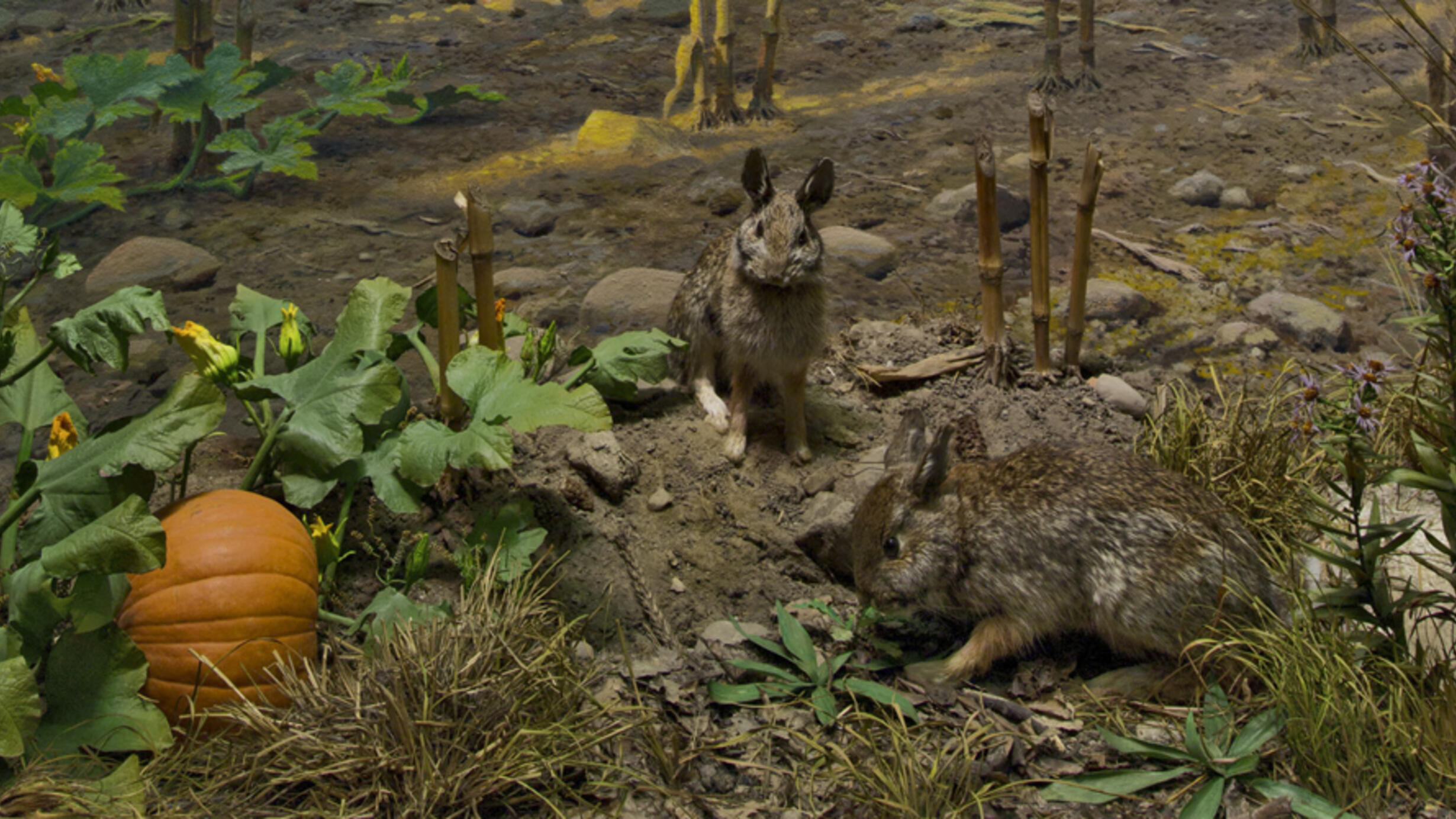Eastern Cottontail
Part of Hall of North American Mammals.

October, Ithaca, New York
Eastern cottontails thrive in brambles bordering open fields, and they are fond of farms, gardens and other green areas tended by people. While browsing in a pumpkin patch, these two rabbits are using their large eyes and pivoting ears to scan their surroundings for danger.
Startled cottontails will bolt for cover, showing the puffy white fur on the underside of their tails. The white flash seems to advertise that the speedy rabbits are off and running. For predators, it’s too late for a surprise attack. Some may give the cottontails up for lost and hunt for other prey.
Rabbits In Motion
Hops, Jumps and Leaps
Cottontails and other rabbits get around by hopping, an ideal gait for quick acceleration and sudden turns. At rest, their long, muscular hind legs are tightly folded, set to extend like a spring at a moment’s notice. This form of locomotion evolved independently in many animal groups, including frogs, grasshoppers and kangaroos.
Cottontails shuffle along and make small hops while browsing, but when alarmed, they can cover 10 feet (three meters) in a single bound. They elude predators by leaping zigzag to keep their movements unpredictable. In spring and summer, a male cottontail will court a female by charging straight at her, and she may react by jumping high in the air.